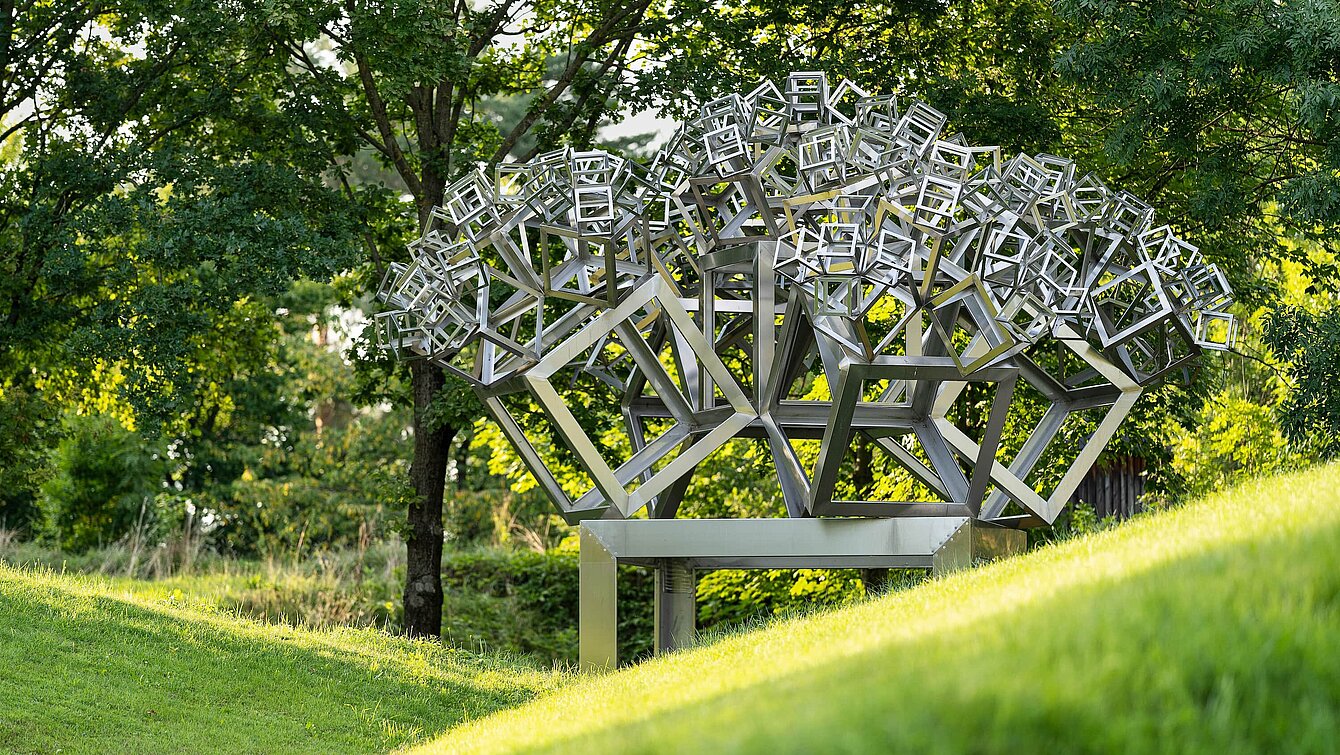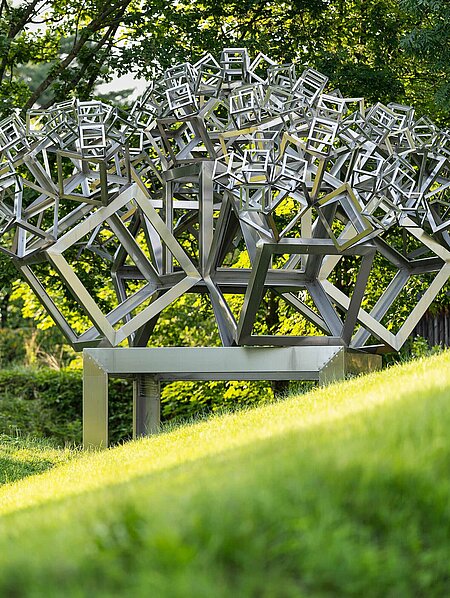This is an ingenious construction in which each cube grows another five cubes in turn. In total there are 156 pieces. The diagonal twisting of the axes with each generation creates a sense of dynamic movement. The technical title refers to the year of its creation, the shape (hexahedron) and the design. The reduction in size of the cubes is based on a factor of 0.44902. Significantly, the aspect ratios are proportioned according to the ‘golden ratio’, so creating an especially harmonious impression. What might look like chaos at first glance in fact follows a sophisticated system.
3D Fraktal 03/H/dd
Hartmut Skerbisch, 2003


Image Credits
Author
Walter Titz
Location on map
Position 46
Owner
Österreichischer Skulpturenpark Privatstiftung
Artist biography
Hartmut Skerbisch
Show all
About the sculpture
Hartmut Skerbisch once said that “sculpture is not a discipline of the fine arts.” So what is it? “The main theme of sculpture is man’s relation with himself.” This certainly applies to Skerbisch’s work, now spanning several decades, which he generates from socio-political and scientific influences rather than ostensibly aesthetic ones. Among other themes, Skerbisch has developed solar trees, an energy game, and sculptures based on geometric axioms.
“3D Fraktal 03/H/dd" is a good example of the way Skerbisch works. The fundamental definition of the piece is best taken from an encyclopaedia: "The term fractal (adjective or noun) was coined by Benoit Mandelbrot (1975) (Lat. fractus: broken, from frangere: break, break into pieces), and refers to natural or artificial shapes or geometric patterns with a high degree of self-similarity. This is for instance the case when an object consists of several smaller copies of itself. Geometric objects of this kind differ from normal smooth objects in several important aspects.”
"3D Fraktal 03/H/dd" is a sophisticated construction where five cubes grow out of one cube respectively, producing a total of 156 cubes whose generations furthermore create a sense of dynamics through the diagonal rotation of their axes: the cubes seem to spring up like proverbial mushrooms, and one almost expects them to grow in size.
It is characteristic of Skerbisch’s work that even the theory of chaos leaves nothing to chance: the reduction of the cubes is based on the factor 0.44902, and aspect ratios follow the principles of the golden section. The abbreviations in the title stand for 2003, the year the work was created; H stands for hexahedron (cube); dd refers to the diagonal rotation mentioned above. It is also not a coincidence that the footpath runs right through the work: this type of art does not require or want distance.



















